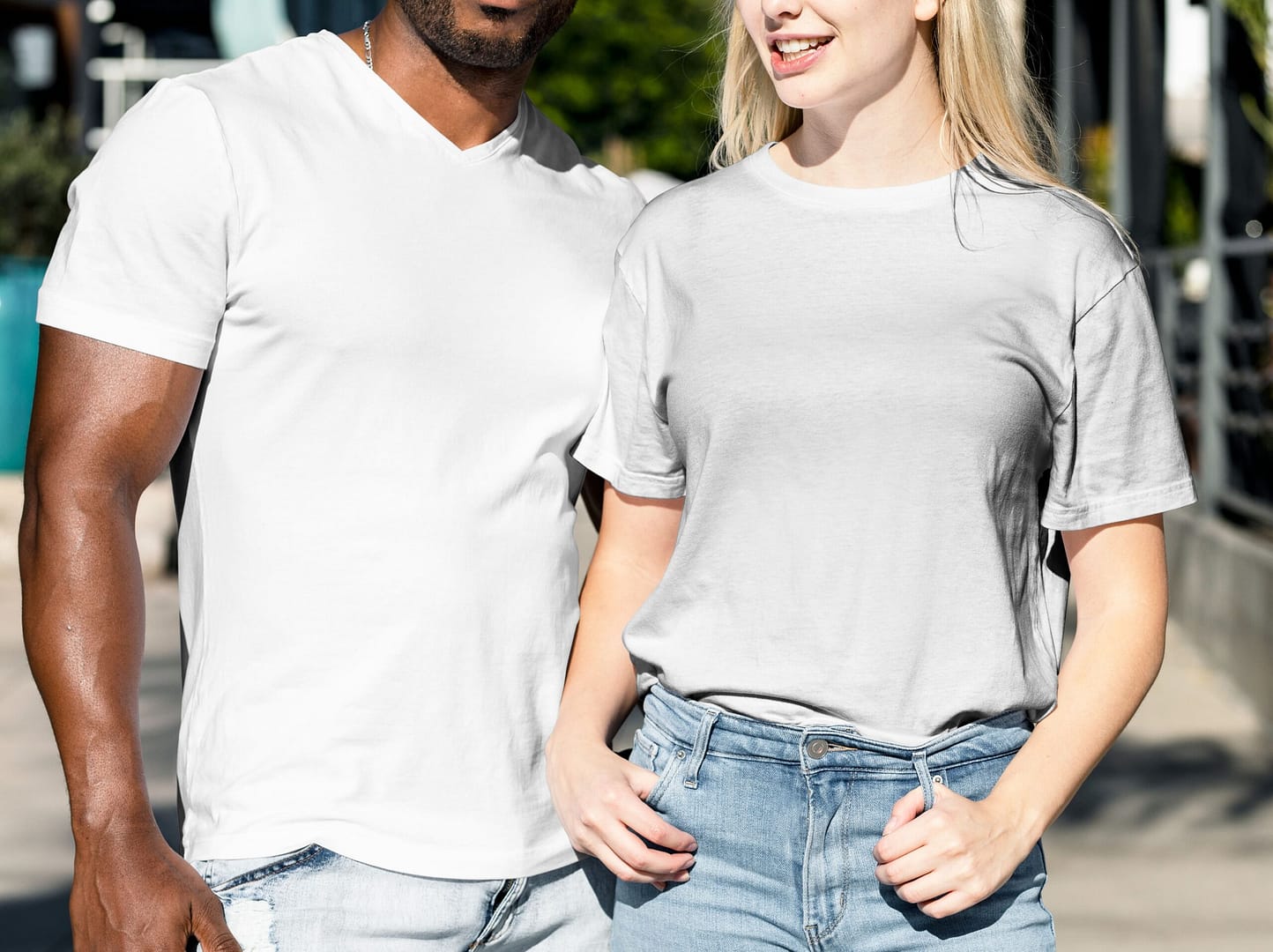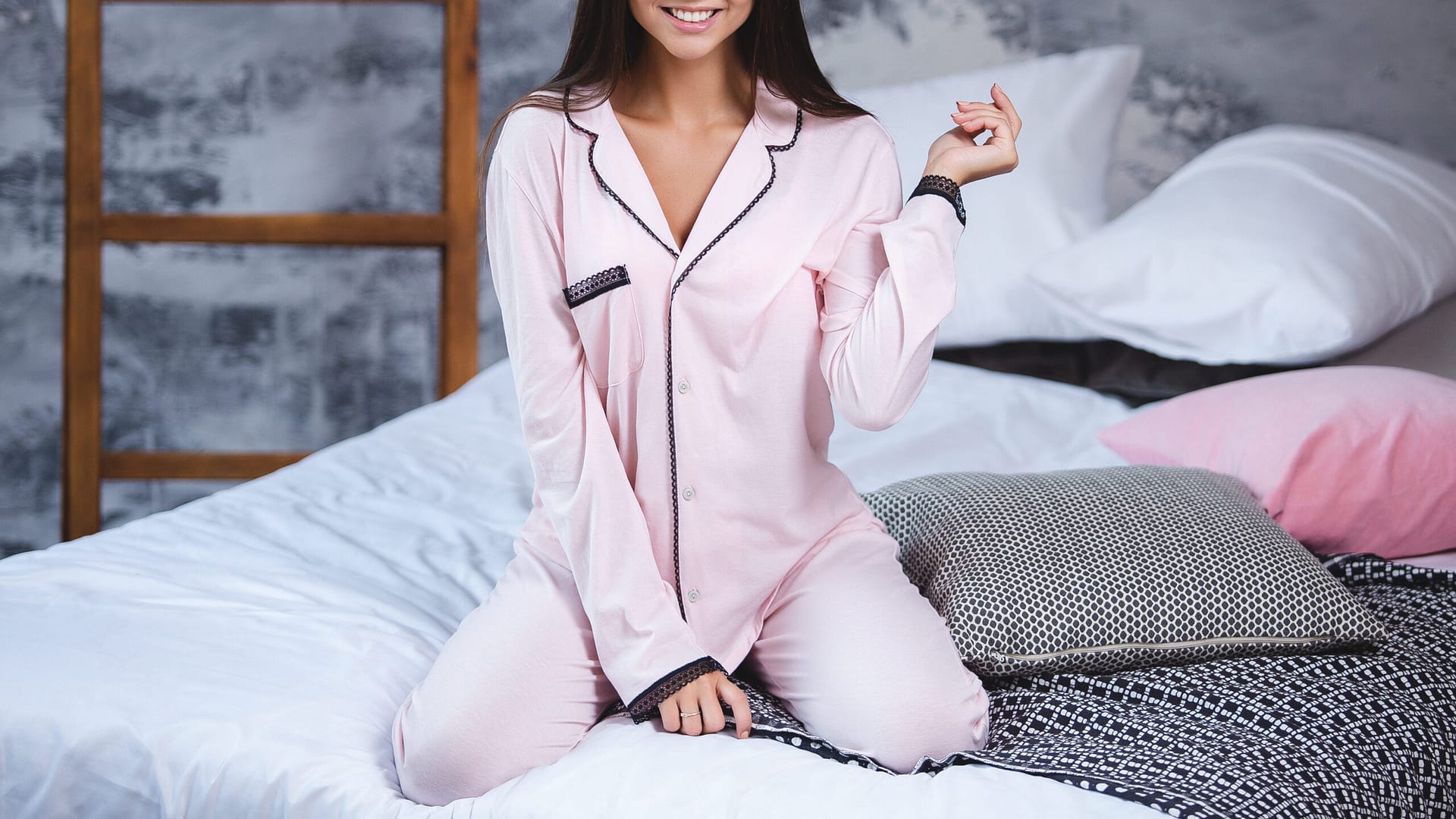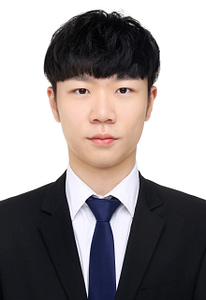The Ultimate Knitwear Yarn Guide: Top 10 Yarns For Your Knitwear
By Raymond Lau – Nov. 3, 2023
Welcome to the essential guide to understanding knitwear yarn, an integral aspect that can make or break your design project. For designers, yarn isn’t just a medium—it’s an invitation to infinite creative possibilities. When you understand the nuances of different types of knitwear yarn, from their texture to their durability, you’re not just designing—you’re engineering an experience.
The quality of yarn you select will directly influence how comfortable, durable, and visually stunning your pieces will be. In this guide, we will cover everything you need to know about knitwear yarn, so you can design with confidence and expertise.
Types of Knitwear Yarn
When it comes to knitwear yarn, one size definitely doesn’t fit all. The fiber content of the yarn can significantly influence the look, feel, and function of the final knitwear piece. Let’s explore the various types of knitwear yarn you’ll encounter in the market:
Natural Fibers
Wool
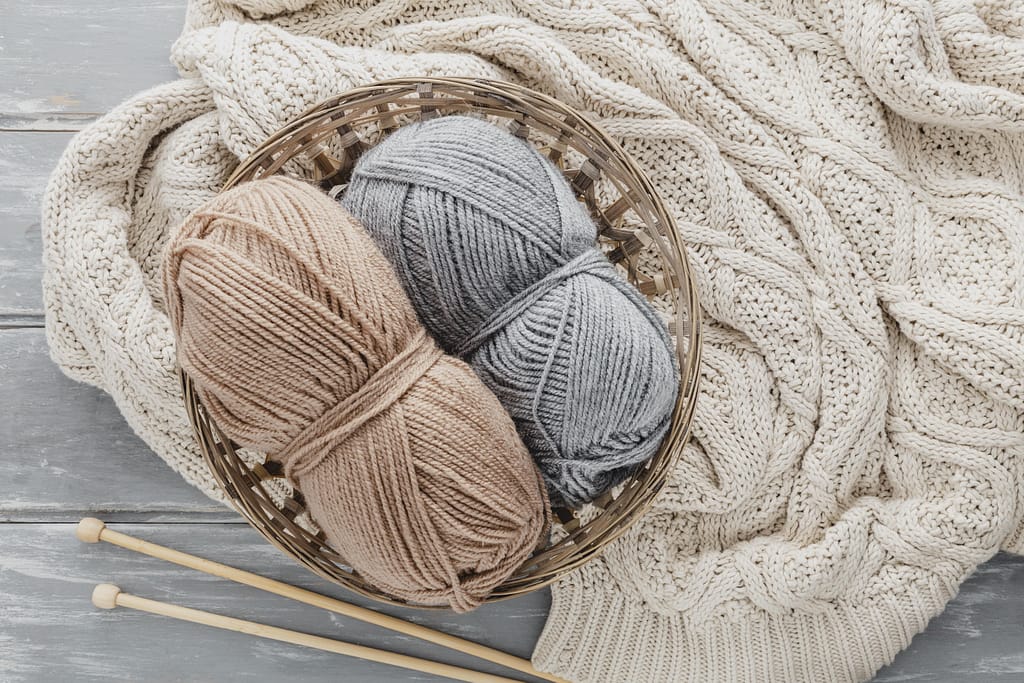
Wool is a versatile fiber that is made from the fleece of sheep. It is known for its warmth, durability, moisture-wicking, and breathable properties. Wool is a good choice for sweaters that need to be warm and durable, especially in cold climates.
Various sheep breeds produce wool, each with unique fiber characteristics in terms of fineness, length, luster, and durability. Among them, the Merino breed stands out as the premier source of high-quality wool. Originally from Spain, the largest Merino sheep farms are now found in Australia. Merino wool boasts a delicate fiber diameter and moderate length, setting it apart from other wool types. Its softness, lightweight nature, and tight undulation make it ideal for crafting the most exquisite fabrics.
Advantages of wool for knitwear yarn:
- Soft and warm
- Breathable and moisture-wicking
- Durable
- Wrinkle-resistant
- Naturally flame-resistant
- Sustainable and biodegradable
Disadvantages of wool for knitwear yarn:
- Can be itchy
- Can be expensive
- Can be prone to shrinking and felting
Cashmere
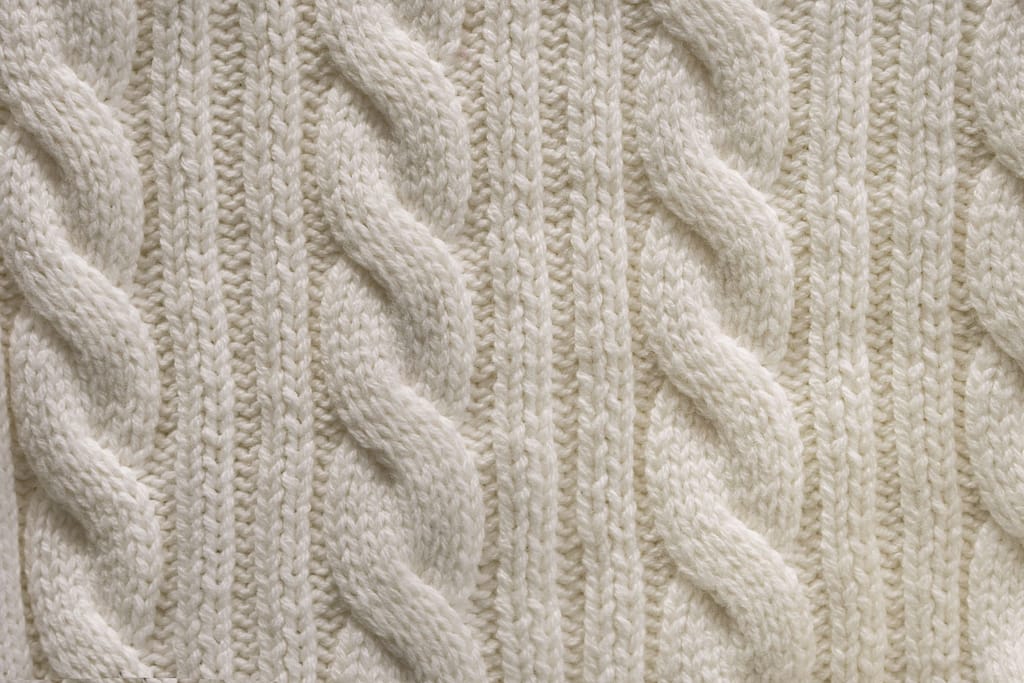
Cashmere is a soft, luxurious fiber that is made from the undercoat of cashmere goats. It is known for its warmth, softness, durability, and lightweight properties. Cashmere is a good choice for sweaters that need to be soft, warm, and durable, especially for people who want a lightweight sweater.
The coarse wool taken from goats will undergo the process of selecting, washing and combing, so the coarse hair, skin scraps, oil and other contents are excluded – this final product is called cashmere. Its fineness is 7-19 microns with average fineness about 14 microns. Cashmere fibre is light, soft, smooth, resilient, moisture-absorbing and is keeping warm. Its luster is natural and soft.
Advantages of cashmere for knitwear yarn:
- Soft and luxurious
- Warm and breathable
- Durable
- Lightweight
- Hypoallergenic
Disadvantages of cashmere for knitwear yarn:
- Expensive
- Can be delicate and require special care
- Can be prone to pilling
Alpaca
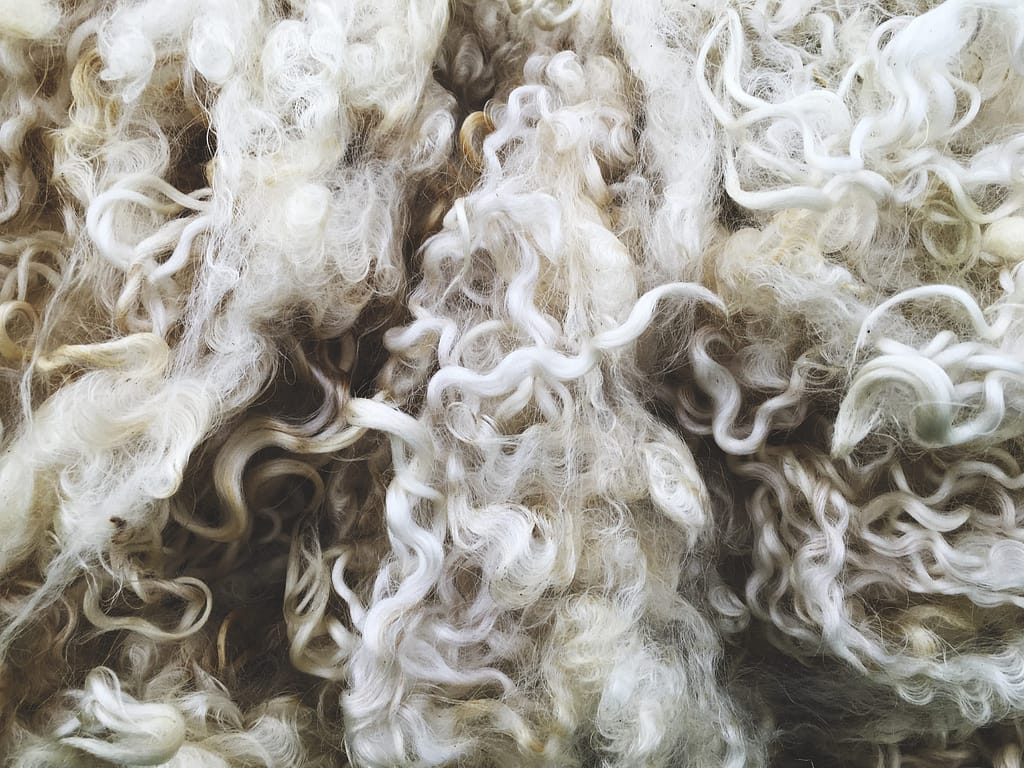
Alpaca is a type of wool that is derived from the fibers that naturally grow on alpacas. Yarn derived from alpacas can be either heavy or light depending on how it is spun, which means that it is ideal for a number of different kinds of garments. Compared to wool, alpaca is considerably softer, and it is also more durable.
The alpaca that are used to make this type of yarn are equipped with tiny air pockets, and these minuscule spaces provide enhanced breathability. At the same time, these yarn are highly insulative, and alpaca is considered to be one of the warmest types of animal fibers. In addition, this type of wool is highly water-resistant, and it is hard to set on fire. Get more alpaca knowledge from Sewport.
Advantages of alpaca for knitwear yarn:
- Soft and luxurious
- Warm and breathable
- Durable
- Hypoallergenic
- Sustainable and biodegradable
Disadvantages of alpaca for knitwear yarn:
- Can be expensive
- Can be delicate and require special care
- Can be prone to pilling
Cotton
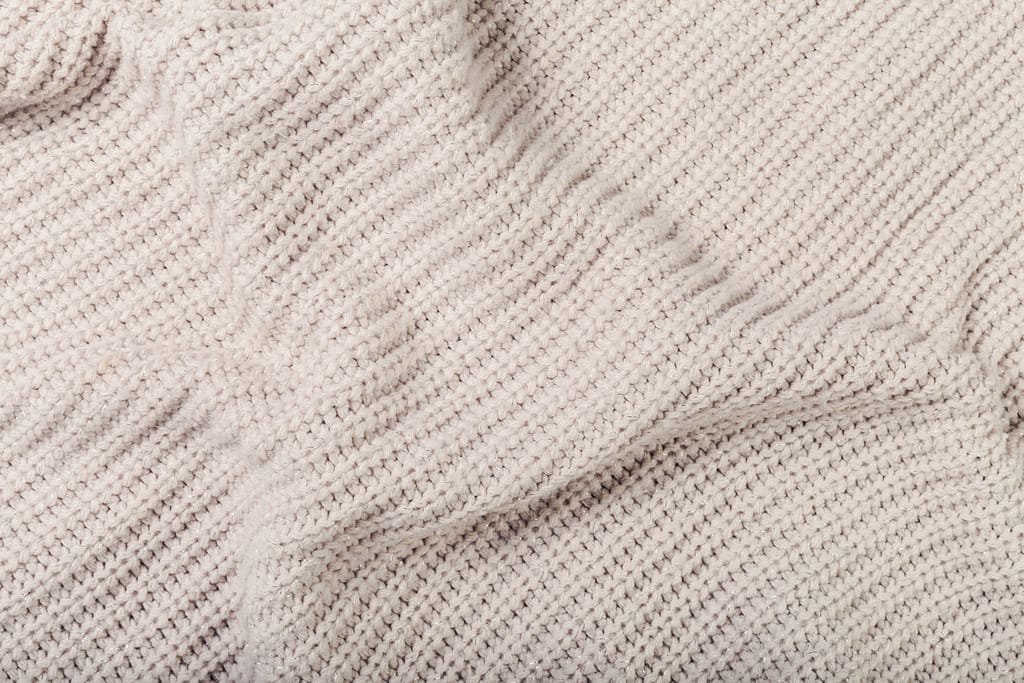
Cotton is a plant-based fiber that is commonly used in knitwear for its soft and breathable nature. Cotton yarn is a good choice for sweaters that need to be soft, breathable, and machine-washable. It is also a good choice for sweaters that will be worn in warmer climates. However, cotton yarn may not be the best choice for sweaters that need to be very warm or durable.
Advantages of cotton for knitwear yarn:
- Soft and breathable
- Machine-washable and dryer-safe
- Affordable
- Versatile
Disadvantages of cotton for knitwear yarn:
- Can be less warm than other fibers, such as wool or alpaca
- Can be less durable than other fibers, such as wool or alpaca
- Can be prone to shrinking and felting
Linen
Linen is a good choice for knitwear that need to be breathable, lightweight, and moisture-wicking. It is also a good choice for sweaters that will be worn in warmer climates. However, linen can be wrinkled and difficult to iron, and it can be rough and scratchy. It is also more expensive than some other fibers, such as cotton or acrylic.
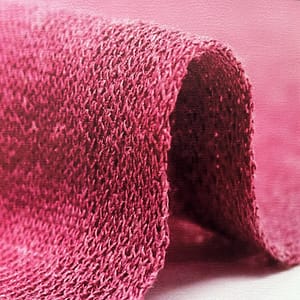
Advantages of linen for knitwear yarn:
- Breathable and lightweight
- Moisture-wicking
- Durable
- Hypoallergenic
- Sustainable and biodegradable
Disadvantages of linen for knitwear yarn:
- Can be wrinkled and difficult to iron
- Can be rough and scratchy
- Can be expensive
- Can be prone to pilling
Synthetic Fibers
Acrylic
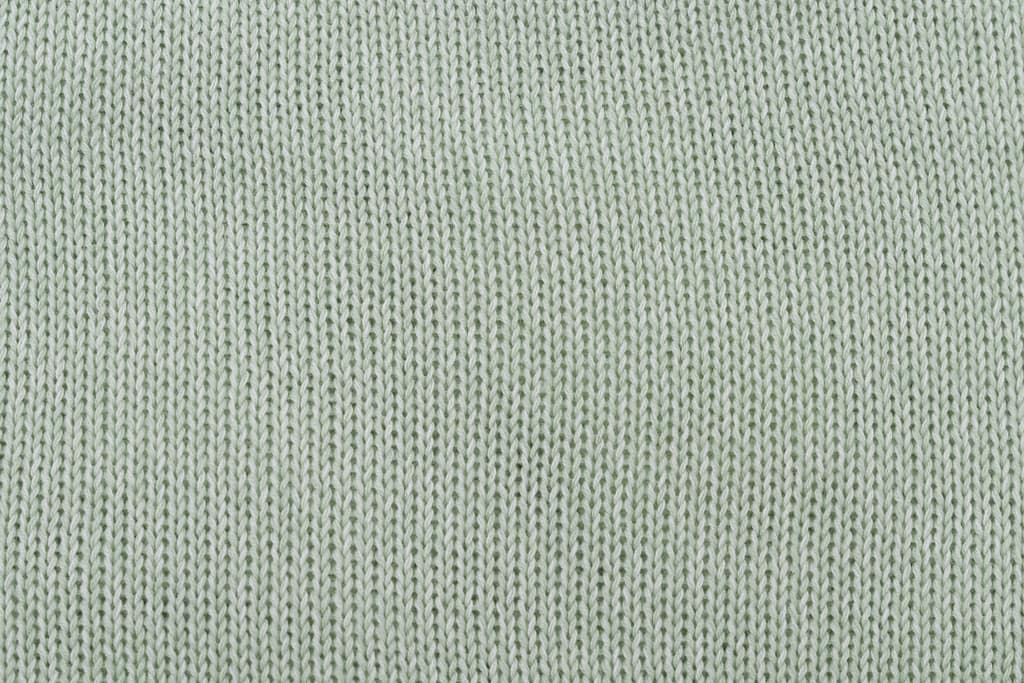
Acrylic is a good choice for sweaters that need to be soft, comfortable, warm, durable, and affordable. It is also a good choice for sweaters that will be worn in colder climates. However, acrylic may not be the best choice for sweaters that need to be very breathable or that will be worn by people with sensitive skin.
Advantages of acrylic for knitwear yarn:
- Soft and comfortable
- Warm and durable
- Affordable
- Easy to care for
- Machine-washable and dryer-safe
- Resistant to shrinking and fading
Disadvantages of acrylic for knitwear yarn:
- Not as breathable as natural fibers
- Can be itchy for some people
- Can be prone to pilling
- Can be less warm than natural fibers, such as wool or alpaca
- Is not as sustainable as natural fibers
Polyester
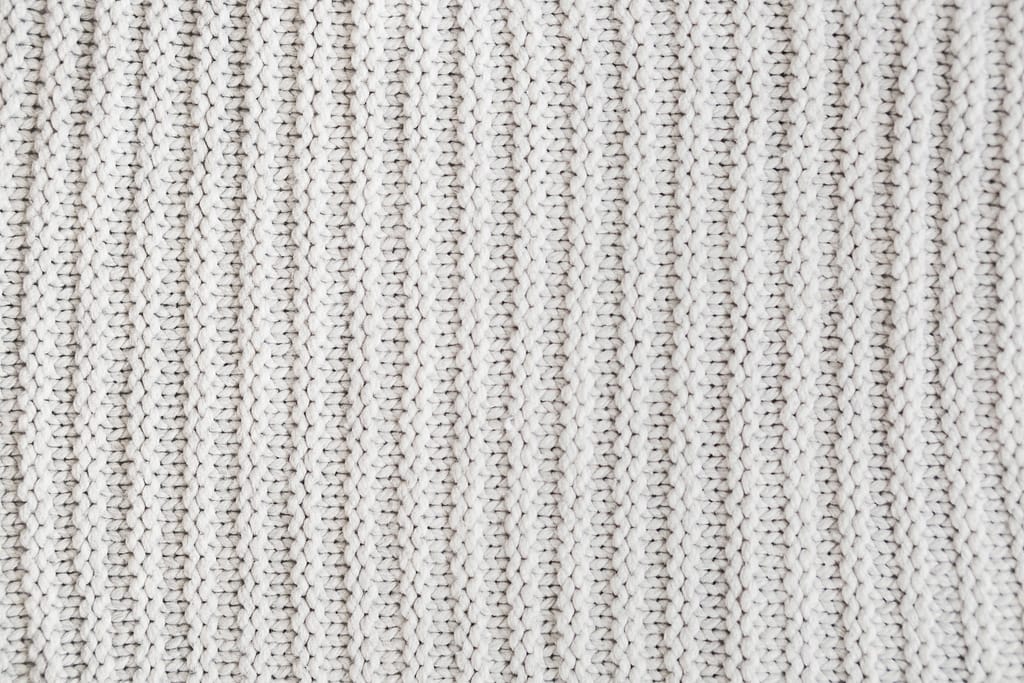
Polyester is another synthetic option, known for its durability and water-repellent properties.
Advantages of polyester for knitwear yarn:
- Soft and comfortable
- Warm and durable
- Affordable
- Easy to care for
- Machine-washable and dryer-safe
- Resistant to shrinking and fading
- Wrinkle-resistant
- Moisture-wicking
Disadvantages of polyester for knitwear yarn:
- Not as breathable as natural fibers
- Can be itchy for some people
- Can be prone to pilling
- Is not as sustainable as natural fibers
Polyamide
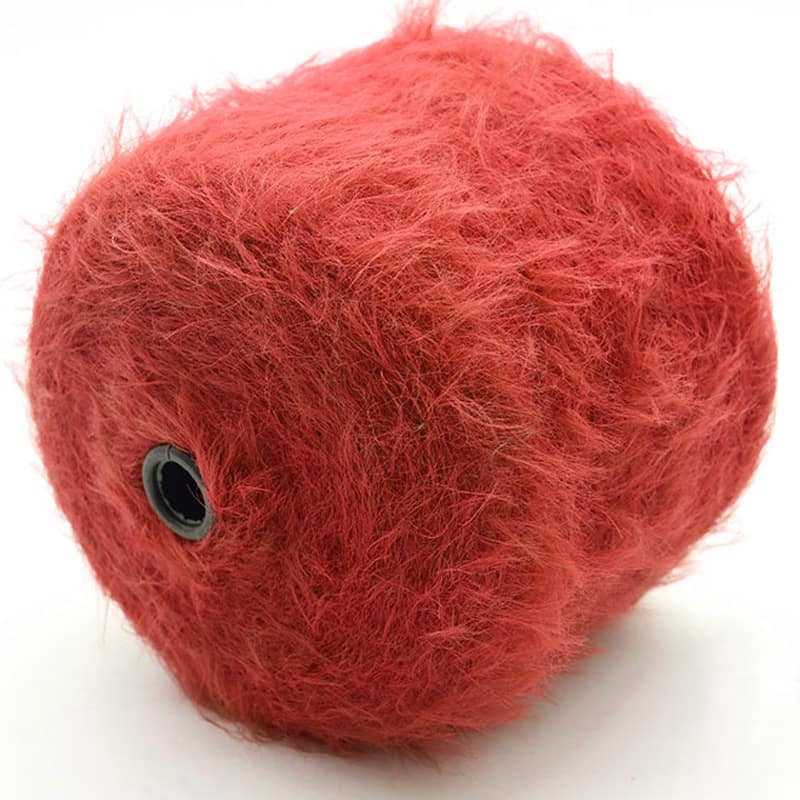
Polyamida yarn, as a new type of yarn, can achieve the feeling of animal feathers after being knitted into knitwear. The yarn provides warmth and comfort and does not need to be sourced from animals.
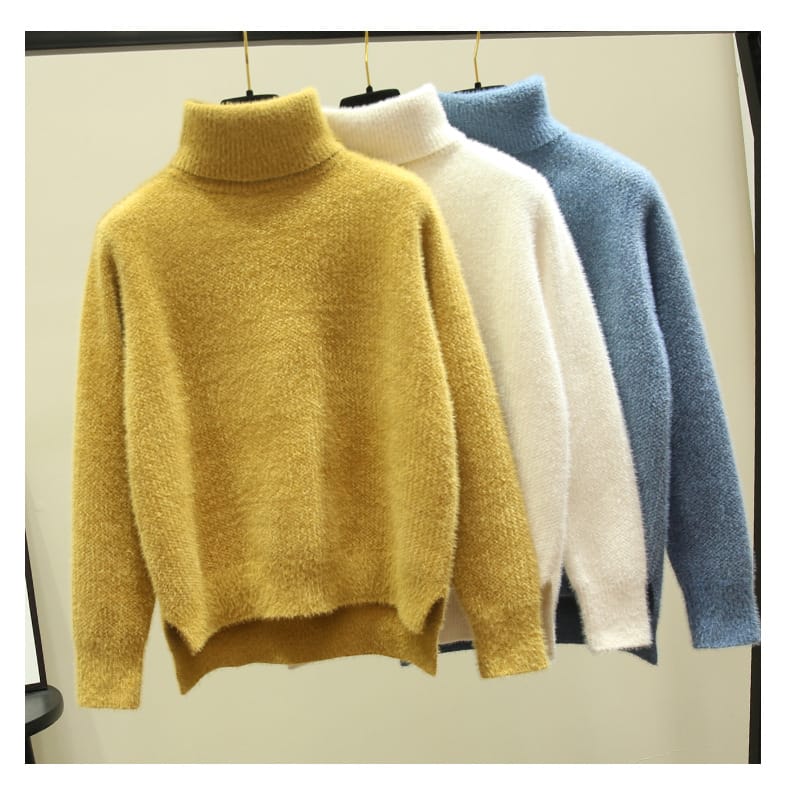
Advantages of polyamide for sweaters:
- Soft and comfortable: Polyamide is a soft and comfortable fiber that is often used in sweaters.
- Durable: Polyamide is a durable fiber that can withstand the wear and tear of everyday use.
- Wrinkle-resistant: Polyamide sweaters are wrinkle-resistant, making them easy to care for.
- Moisture-wicking: Polyamide sweaters are moisture-wicking, which helps to keep you dry and comfortable.
- Affordable: Polyamide sweaters are often affordable, making them a value-conscious choice.
Disadvantages of polyamide for sweaters:
- Not as breathable as natural fibers: Polyamide is not as breathable as natural fibers, such as cotton or wool. This can make polyamide sweaters feel hot and uncomfortable in warm weather.
- Can be static-prone: Polyamide sweaters can be static-prone, which can attract dust and pet hair.
- Is not as sustainable as natural fibers: Polyamide is a synthetic fiber, which means that it is not as sustainable as natural fibers, such as cotton or wool.
Chenille
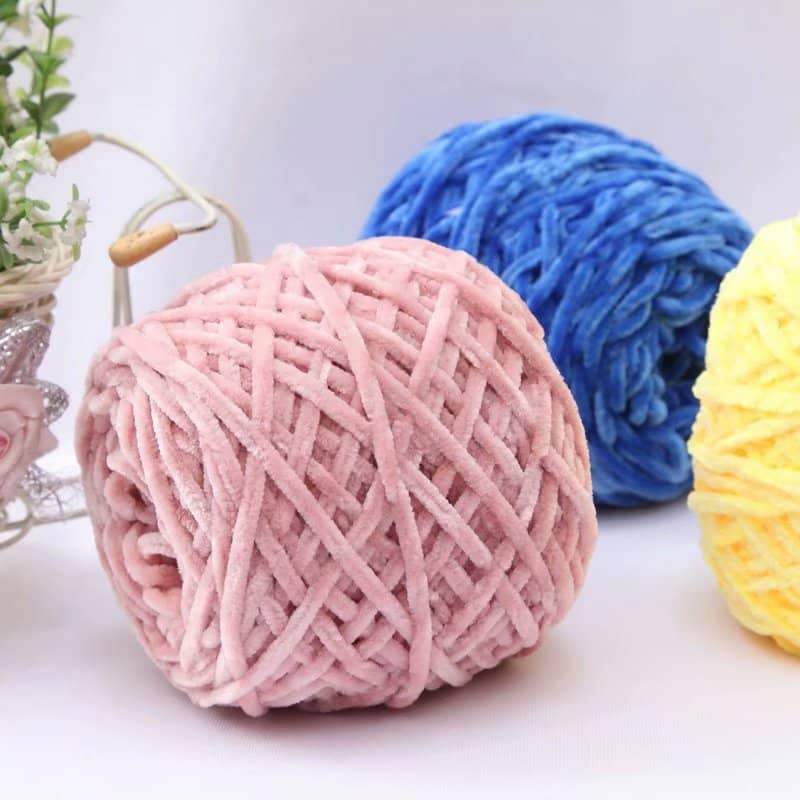
Chenille is a type of yarn, or the fabric made from it. Chenille is the French word for caterpillar whose fur the yarn is supposed to resemble.Chenille is a type of yarn, or the fabric made from it. Chenille is the French word for caterpillar whose fur the yarn is supposed to resemble.
The chenille yarn is manufactured by placing short lengths of yarn, called the “pile”, between two “core yarns” and then twisting the yarn together. The edges of these piles then stand at right angles to the yarn’s core, giving chenille both its softness and its characteristic look. Chenille will look different in one direction compared to another, as the fibers catch the light differently. Chenille can appear iridescent without actually using Iridescence fibers. The yarn is commonly manufactured from cotton, but can also be made using acrylic, rayon and olefin.
Advantages of chenille for sweaters:
- Soft and plush: Chenille yarn is made from a series of cut loops, which gives it a soft and plush texture.
- Warm and insulating: Chenille yarn is thick and bulky, which makes it a good choice for sweaters that need to be warm and insulating.
- Durable: Chenille yarn is relatively durable, so it can withstand the wear and tear of everyday use.
- Versatile: Chenille can be used to create a variety of sweater styles, from casual to dressy.
Disadvantages of chenille for sweaters:
- Can be heavy and bulky: Chenille yarn is thick and bulky, which can make sweaters made from chenille heavy and bulky.
- Can be difficult to care for: Chenille sweaters can be difficult to wash and dry, and they may require special care to prevent pilling and shrinkage.
Blended Fibers
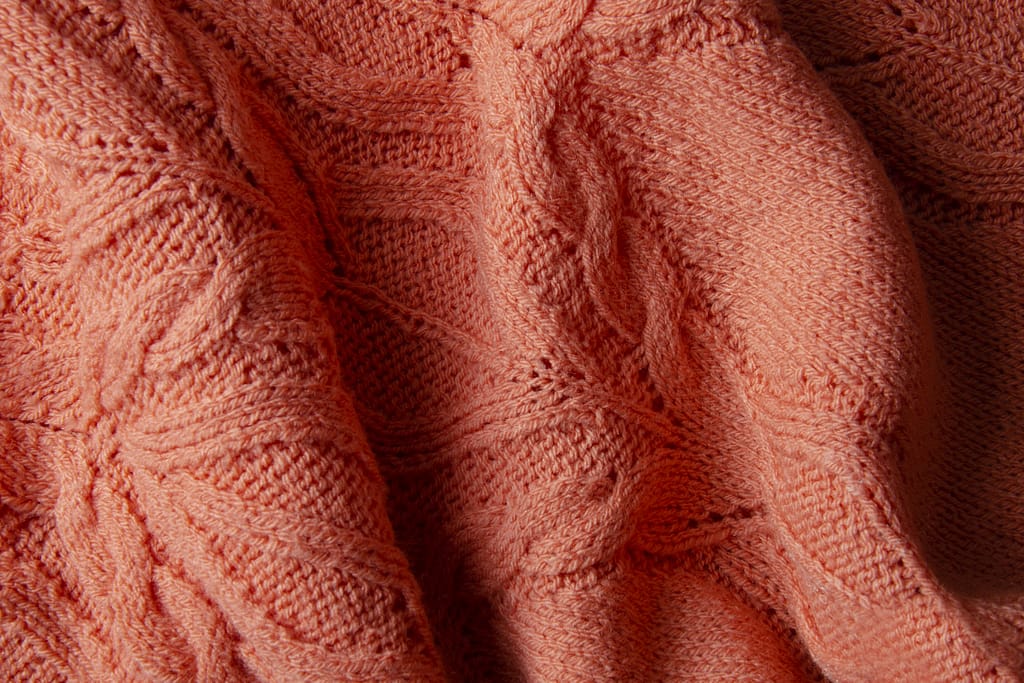
Blended fibers can be a good choice for sweaters, as they can combine the best properties of each fiber. However, it is important to choose a blend that is appropriate for your needs, and to be aware of the potential disadvantages of blended fibers.
Advantages of blended fibers:
- Blended fibers can combine the best properties of each fiber. For example, a blend of wool and acrylic can be soft and warm like wool, but also durable and easy to care for like acrylic.
- Blended fibers can be more affordable than pure natural fibers. For example, a blend of wool and polyester may be less expensive than a pure wool sweater.
- Blended fibers can be more versatile than pure natural fibers. For example, a blend of cotton and linen can be used to make a sweater that is both breathable and lightweight, making it suitable for a variety of climates.
Disadvantages of blended fibers:
- Blended fibers may not be as durable as pure natural fibers. For example, a blend of wool and acrylic may be more prone to pilling than a pure wool sweater.
- Blended fibers may not be as breathable as pure natural fibers. For example, a blend of cotton and polyester may be less breathable than a pure cotton sweater.
- Blended fibers may not be as sustainable as pure natural fibers. For example, a blend of wool and polyester may be more difficult to recycle than a pure wool sweater.
Properties of Knitwear Yarn
Understanding the properties of knitwear yarn is crucial for making informed decisions about your designs. From the fiber type to the color, each property can significantly impact the end result. Let’s go through some of the critical characteristics:
Fiber Type
The fiber type directly influences how the yarn will behave, both during the knitting process and in the final product. For example, wool tends to be warm and elastic, while cotton is cool and less stretchy. As a designer, you’ll need to match the fiber type with the intended use of the knitwear.
Fiber Weight
This refers to the thickness of the yarn, which can range from lace-weight to super bulky. The weight will dictate the gauge (stitches per inch) of your knitting, and consequently, the drape and appearance of the finished piece.
Ply
Ply refers to the number of strands twisted together to make the yarn. Single-ply yarns offer a softer texture but can be less durable than multi-ply yarns. The ply can also impact the yarn’s stitch definition, which is essential for intricate patterns.
Twist
The twist of the yarn affects its durability and texture. A high twist yarn will generally be more durable but may lack softness. Low twist yarns tend to be softer and are ideal for projects that require a plush, cozy feel.
Texture
The texture can vary from smooth and silky to rough and tweedy. Textured yarns like bouclé or chenille add visual interest to a piece but can be challenging to work with for complex stitch patterns.
Color
Color is a design element that can make or break your knitwear. Whether you choose a solid, heathered, or variegated yarn, the color will significantly impact the aesthetic appeal of your design.
Selecting Yarn for a Knitwear Design
Choosing the right yarn is crucial for the success of your knitwear design project. There are several factors to consider, each contributing to the final look and feel of the garment.
Consider the Desired Drape, Texture, and Finish of Your Design
The drape of your garment is largely dictated by the type of yarn you choose. Heavier yarns like bulky wool will add structure, while lighter yarns like lace-weight silk will offer a more flowing drape. The texture and finish are also essential considerations; for instance, a glossy merino wool will provide a different finish than a matte cotton yarn.
Choose a Yarn that is Appropriate for the Skill Level of Your Target Knitters
Some yarns are easier to work with than others. If you’re designing for beginners, you might opt for a smooth, plied yarn that doesn’t split easily. On the other hand, experienced knitters may appreciate the challenge and unique texture of a more complex yarn.
Consider the Cost and Availability of the Yarn
High-quality, specialty yarns can be expensive and may not be readily available to all knitters. Consider your audience and make sure to suggest alternatives when recommending a specific yarn for a design.
Working with Knitwear Yarn
Once you’ve selected the perfect yarn for your knitwear design, the next step is to understand how to work with it effectively. From preparation to knitting techniques and finishing touches, each stage is crucial for a polished end product.
Yarn Preparation (Winding, Skeining, etc.)
Before you dive into knitting, you’ll often need to prepare the yarn. Skeins may need to be wound into balls or cakes for easier usage. Tools like a yarn swift and ball winder can make this process faster and more efficient.
Knitting Techniques
Different yarns can behave very differently when knitted, so it’s crucial to understand various knitting techniques that are suited to your chosen yarn. For example, some textured or fuzzy yarns may not showcase intricate lace or cable patterns well. Therefore, you might opt for simpler stitches or textures.
Finishing Techniques (Blocking, Washing, Drying, etc.)
Once the knitting is done, your project will likely need some finishing touches. This could include weaving in ends, blocking to shape, and perhaps some washing and drying. The yarn you choose will dictate the best methods for these steps. For example, wool generally benefits from wet blocking, while acrylic might require steam blocking.
Troubleshooting Knitwear Yarn Problems
Even the most experienced designers can run into challenges when working with knitwear yarn. Here are some common problems and how to tackle them:
Common Yarn Problems
- Knots: Finding a knot in your yarn can be frustrating. If you encounter this, it’s best to cut out the knot and join the new end in a way that’s as seamless as possible.
- Uneven Tension: If your knitwear is looking a bit lopsided, it could be an issue of tension. This is often due to inconsistent knitting speed or grip. Take the time to practice your stitches to achieve more even tension.
- Pilling: Some fibers, especially softer ones like cashmere or certain blends, may pill over time. While some amount of pilling is inevitable, choosing a high-twist yarn can help reduce this problem.
- Color Inconsistency: Especially in hand-dyed yarns, you might find some color variations. To avoid abrupt color changes, it’s advisable to alternate between different skeins every few rows when knitting large projects.
How to Avoid and Fix Yarn Problems
- Use Quality Yarn: Investing in quality yarn from reputable sources can eliminate many issues from the start. Our Valtin Apparel yarns are rigorously tested for quality and consistency.
- Gauge Swatch: Always make a gauge swatch to ensure that the yarn and needle size are compatible with your intended design.
- Consult Resources: When in doubt, consult online forums, knitting guides, or even customer reviews on yarn websites for additional tips and tricks for working with challenging yarns.
Conclusion
When it comes to knitwear, the yarn you choose can make or break your design. From natural to synthetic and blended fibers, each type of yarn brings its own set of properties that will affect the drape, texture, and durability of your garment. Understanding these characteristics is essential for both novice and seasoned designers alike.
Through this guide, we’ve equipped you with the knowledge you need to select the ideal yarn for your knitwear projects. You’ve learned about the various types of yarn, their individual properties, and how to troubleshoot common yarn-related issues.



